Latest Reports
-
![Exploring HCLTech’s advances in medical device engineering and healthcare transformation thumbnail 6 - Exploring HCLTech’s advances in medical device engineering and healthcare transformation]()
Exploring HCLTech’s advances in medical device engineering and healthcare transformation
In the past 12 to 18 months, GenAI has transitioned from pilot projects to full product implementation across the healthcare and life sciences sectors. It is accelerating drug discovery, optimizing clinical trials, and enhancing biomarker identification for precision medicine. AI-driven genomic data platforms are facilitating breakthroughs in personalized healthcare and disease research, while Industry 4.0 technologies are revolutionizing manufacturing through real-time analytics and small-batch production. Moreover, AI is bolstering supply chain resilience with predictive forecasting, blockchain transparency, and diversified supplier networks. On the commercial side, AI-powered engagement strategies, omnichannel marketing, and telemedicine are expanding direct-to-consumer models and improving patient adherence. This shift towards a digital, AI-driven healthcare system enables remote monitoring, self-care guidance, and proactive interventions, all of which contribute to better population health and care delivery while reducing administrative burdens and enhancing workforce efficiency.
May, 2025
-
![Fair Market Value May 2025 thumbnail 5 scaled - Fair Market Value May 2025]()
Fair Market Value May 2025
The Computer Economics Market Value Reports provide information on the most commonly traded machines and systems at the time the report is published. The values shown are the composites of a range of quotes acquired from sources within the industry deemed reliable, accuracy of the information presented is not guaranteed. Resources are eBay, Insight, NewEgg, CDW, ETB-Tech, Amazon, Savemyserver, TheServerStore, LoadBalancer, NetworkOutlet, Netsyst-Direct, TigerDirect, and others as well as online sales companies and appraisals.
May, 2025
-
![Residual Value Forecast May 2025 thumbnail 4 scaled - Residual Value Forecast May 2025]()
Residual Value Forecast May 2025
Our quarterly Residual Value Forecast (RVF) report provides forecasts for the following categories of IT equipment: desktop computers, laptops, network equipment, printers, servers, storage devices, and other IT equipment. It also includes residual values for other non-IT equipment in the following categories: copiers, material handling equipment (forklifts), mail equipment, medical equipment, test equipment, and miscellaneous equipment such as manufacturing machinery and NC machines. Residual Value Forecasts are provided for five years for end-user, wholesale, and orderly liquidation values (OLV) prices.
May, 2025
-
![Google Cloud’s Yellow Brick Road: The New Way to Cloud with AI-First Stack thumbnail - Google Cloud’s Yellow Brick Road: The New Way to Cloud with AI-First Stack]()
Google Cloud’s Yellow Brick Road: The New Way to Cloud with AI-First Stack
This research byte highlights the industry’s shift toward autonomous, task-oriented AI agents, with 88% of enterprises expected to adopt them in some capacity in 2025. However, only 10% will scale the deployment of these agents. At Google Cloud Next 2025, this transformation was symbolized through a generative AI reinterpretation of The Wizard of Oz, underscoring Google’s vision for AI-driven cloud platforms. CEO Sundar Pichai emphasized AI as a foundational layer, not an add-on, with innovations like Gemini-powered models and agents guiding enterprises along a modern “yellow brick road”—toward open, secure, AI-first cloud ecosystems.
May, 2025
-
![Oracle Cloud ERP Services 2024–2025 Market Insights™ Untitled 1 - Oracle Cloud ERP Services 2024–2025 Market Insights™]()
Oracle Cloud ERP Services 2024–2025 Market Insights™
The Oracle Cloud ERP Services 2024–2025 Market Insights™ assists organizations in identifying important demand-side trends that are expected to have a long-term impact on any Oracle Cloud ERP implementation or maintenance project. The report also highlights key challenges that enterprises face today in this space.
May, 2025
-
![Oracle Cloud ERP Services: Redefining ERP Implementation and Support with Generative AI MoneyShot View Oracle Cloud ERP Services 2024 2025 RadarView - Oracle Cloud ERP Services: Redefining ERP Implementation and Support with Generative AI]()
Oracle Cloud ERP Services: Redefining ERP Implementation and Support with Generative AI
Owing to the macroeconomic headwinds, customers are looking to modernize their legacy systems, including ERP, with minimal operational overhead. They are modernizing billing, order management, and settlement processes while exploring innovative commercial models such as subscription and pay-per-use pricing through Oracle Cloud ERP adoption. Enterprises are also piloting low-risk generative AI use cases, including automated ticket resolution, financial reporting automation, and the introduction of digital assistants, to reduce manual effort and improve accuracy. To support this shift, service providers are embedding generative AI into delivery platforms, adopting reusable assets, and embracing fixed-price models that enable faster, more cost-predictable ERP transformations.
May, 2025
-
![Oracle Cloud ERP Services 2024–2025 RadarView™ Untitled - Oracle Cloud ERP Services 2024–2025 RadarView™]()
Oracle Cloud ERP Services 2024–2025 RadarView™
The Oracle Cloud ERP Services 2024–2025 RadarView™ assists organizations in identifying strategic partners for adopting Oracle Cloud ERP by offering detailed capability and experience analyses for service providers. It provides a 360-degree view of key Oracle Cloud ERP service providers across practice maturity, partner ecosystem, and investments and innovation to help enterprises identify the appropriate service partner. The 66-page report also highlights the top supply-side trends in the Oracle Cloud ERP services space and Avasant’s viewpoint on them.
May, 2025
-
![Banking Digital Services 2025 Market Insights™ Untitled - Banking Digital Services 2025 Market Insights™]()
Banking Digital Services 2025 Market Insights™
The Banking Digital Services 2025 Market Insights™ assists organizations in identifying important demand-side trends that are expected to have a long-term impact on any digital project in the banking industry. The report also highlights key challenges that enterprises face today in this space.
May, 2025
-
![Banking Digital Services: Building Future-Ready Banks with Smart and Sustainable Tech Moneyshot - Banking Digital Services: Building Future-Ready Banks with Smart and Sustainable Tech]()
Banking Digital Services: Building Future-Ready Banks with Smart and Sustainable Tech
Banks are prioritizing cost reduction by adopting cloud-native infrastructure and composable architectures to modernize legacy systems and drive operational efficiency. Global capability centers (GCCs) are also helping banks access top talent while fostering innovation. To enhance customer engagement, banks are leveraging generative AI and advanced analytics to enable hyperpersonalized services. Additionally, banks are strengthening cybersecurity with AI-based threat detection and RegTech solutions for streamlined compliance. They are utilizing the “Sidecore” strategy to facilitate digital core upgrades without disrupting legacy systems. Digital wallets, crypto transactions, and digital currencies are expanding financial access, while ESG goals shape sustainable financial products and services.
May, 2025
-
![Banking Digital Services 2025 RadarView™ badge - Banking Digital Services 2025 RadarView™]()
Banking Digital Services 2025 RadarView™
The Banking Digital Services 2025 RadarView™ helps banking enterprises craft a robust strategy based on industry outlook, best practices, and digital transformation. The report can also aid them in identifying the right partners and service providers to accelerate their digital transformation in this space. The 105-page report also highlights top market trends in the banking space and Avasant’s viewpoint.
May, 2025



















